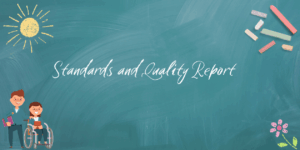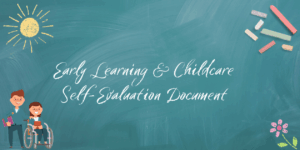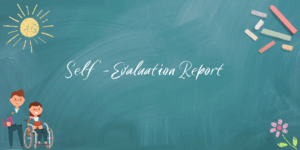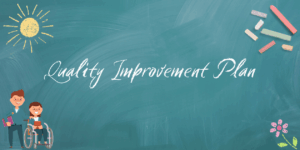



With Christmas just around the corner, we’re excited to invite parents and carers to a festive evening of creativity at Fairview!
Join us for a free workshop in December where you’ll get the chance to make your very own dried flower Christmas baubles. It’s a lovely opportunity to catch up with other Fairview families, get into the festive spirit, and maybe even enjoy a cheeky glass of mulled wine while you’re at it!
THE RATIONALE AND DESIGN OF THE FAIRVIEW CURRICULUM
At Fairview School, our curriculum rationale is deeply rooted in our commitment to providing a comprehensive and individualised education that meets the diverse needs of our pupils with severe and complex learning needs. Our curriculum is designed to promote holistic development, foster independence, enhance quality of life, and prepare pupils for meaningful engagement in their communities. The following principles guide our curriculum development and implementation:
Individualised Learning:
We recognise that each child and young person at Fairview School is unique, with their own strengths, challenges, interests, and learning styles. Therefore, our curriculum is highly individualised, tailored to the specific needs, abilities, and goals of each pupil. We conduct thorough assessments and collaborate closely with pupils, families, and multi-disciplinary teams to develop personalised My Learning Plans that guide instructional planning and delivery.
Functional Skills Development:
Our curriculum prioritises the development of functional skills that are essential for daily living, communication, social interaction, and independence. We place a strong emphasis on teaching practical skills that empower pupils to navigate their environment, engage in self-care tasks, communicate their needs and preferences, and participate meaningfully in their communities.
Pupil Voice:
As a Gold Rights Respecting School pupil voice is at the centre of what we do. Pupils are given choices throughout their day and encouraged to share their views through programmes such as the pupil council, Inclusion Ambassadors and in the classroom.
Multi-Sensory, Play based and Experiential Learning:
Given the diverse sensory, communication, and cognitive profiles of our pupils, we employ a multi-sensory, play based and experiential approach to learning. Our curriculum incorporates hands-on activities, real-life experiences, and sensory-rich materials to engage pupils in meaningful learning opportunities that cater to their individual sensory preferences and abilities. We encourage pupils to build their play skills to facilitate other areas of skill developments.
Communication and Social Skills:
We recognise the importance of communication and social interaction in fostering relationships, building connections, and promoting inclusion. Our curriculum includes explicit instruction in communication skills, utilising a variety of modalities such as speech, sign language – Makaton, augmentative and alternative communication (AAC), and tactile communication methods. We also provide structured opportunities for social skills development, peer interactions, and community integration.
Functional Academics and Life Skills:
While academic learning can be a part of our curriculum, we prioritise the acquisition of functional academics that have practical relevance to our pupils’ everyday lives. Our curriculum integrates academic instruction with life skills training, vocational exploration, and community-based learning experiences to prepare pupils for post-school transition and adult life.
Inter-disciplinary Approach:
Collaboration and integration across disciplines are fundamental to our curriculum delivery. Our teams work collaboratively to address the complex needs of our pupils, drawing upon expertise from special education teachers, speech-language therapists, occupational therapists, physical therapists, behaviour specialists, and other professionals to provide holistic support and intervention.
Assessment for Learning and Progress Monitoring:
Continuous assessment and progress monitoring are integral components of our curriculum implementation. We utilise a variety of formal and informal assessment measures to evaluate progress, identify learning objectives, and inform instructional decision-making. Assessment data is used to adjust instructional strategies, set goals, and track growth over time.
Family and Community Engagement:
We recognise the importance of family involvement and collaboration in supporting pupils’ learning and development. Our curriculum encourages active participation and partnership with families, providing opportunities for ongoing communication, education, and support. We also seek to foster strong ties with the wider community, including local agencies, organisations, and businesses, to create meaningful opportunities for inclusion and community participation.
In summary, the curriculum at Fairview School is designed to empower our pupils with severe and complex learning needs to reach their full potential and be the best they can be. Cultivating their unique abilities, and supporting them to thrive as active, engaged members of society. Through our commitment to individualisation, functional skill development, multi-sensory learning, and collaborative partnership, we strive to create a supportive and inclusive learning environment where our pupils can succeed and flourish.

A Scottish Standards and Quality Report (SQR) is an annual self-evaluation document for a school or nursery, detailing its progress, strengths, and areas for improvement based on the previous academic year. It assesses performance against national quality indicators, analyzes data on learner attainment and well-being, and outlines priorities and actions for the upcoming year, informing the School Improvement Plan.
What the report covers:
Summarizes how the school has met its goals and what it has accomplished, including the achievements of children and young people.
Identifies specific aspects of the school’s work that need to get better.
Uses evidence from various sources, such as attainment results, standardized testing, and learner work, to inform its evaluation.
Aligns its self-evaluation with national education priorities and frameworks.
Incorporates the views of children, parents, staff, and community partners to get a comprehensive understanding of the school’s performance.
Purpose of the report:
How it informs the future:

ELC_Self_Evaluation_Template_2024_2025 (1)
What is a Early Learning & Childcare Self-Evaluation Document?
An Early Learning & Childcare (ELC) Self-Evaluation Document is a tool for ELC services to assess their quality and identify areas for improvement by reflecting on practices, collecting feedback, and analyzing evidence. Using a quality improvement framework with specific quality indicators (QIs), settings ask: “How are we doing?”, “How do we know?”, and “What are we going to do now?” to understand strengths and pinpoint necessary actions for enhancing care and learning for children.
Purpose and Function:
The document helps services recognize what’s working well and where development is needed in their operations, policies, and practices.
Self-evaluation is a continuous, ongoing process of monitoring and development, not a one-off event.
It involves gathering evidence from various sources, including observations, data, and feedback from parents, staff, and the children themselves.
The findings from the self-evaluation are used to develop action plans for making concrete changes and improving quality over time.
These documents often align with national quality frameworks used by regulatory bodies, such as Education Scotland and the Care Inspectorate, which use them to support their own inspections.
Key Components and Process:
Staff reflect on their current practices, policies, and the overall effectiveness of the service.
Feedback is collected from a range of stakeholders, including parents, families, staff, and importantly, the children.
The collected evidence is analyzed against specific quality indicators and themes.
The core of the process is answering:
Based on the evaluation, specific goals and actionable steps are identified to improve services and outcomes for children.

Self Evaluation – Fairview 24.25 final

What is a Self-Evaluation report?
Schools conduct their own evaluations using national frameworks, often focused on specific areas like health and wellbeing or learning, teaching, and assessment.
The process is supported by external scrutiny from the Perth and Kinross Council’s Quality Improvement Officers (QIOs) who review self-evaluations and highlight areas for improvement.
Self-evaluation involves gathering views from various stakeholders, including:
Schools and the local authority analyze data on attendance, achievement, and attainment to identify areas where performance can be improved.
The findings from self-evaluation directly inform the development of school improvement plans to ensure continuous progress against local and national priorities.

A review of the school’s progress, performance, and achievements over the previous school year.
A forward-looking document that sets clear priorities, actions, and measurable outcomes to drive improvement.
The process involves schools and education services critically analyzing data, performance, and feedback from various stakeholders to identify strengths and areas for development.
The SQIP is informed by the NIF, which guides the Scottish education system to focus on improving attainment, closing poverty-related attainment gaps, enhancing health and wellbeing, and promoting pathways to successful futures for all children.
Plans are structured to address national priorities from the NIF and local or regional goals, ensuring a coherent approach to improvement.
Schools evaluate their performance using evidence and self-evaluation processes.
The Standards and Quality Report is created to document these findings and the achievements of the past year.
Based on the evaluation and reporting, key priorities and improvement actions are identified for the upcoming year.
The Improvement Plan details specific actions, with measurable outcomes, to achieve these priorities.